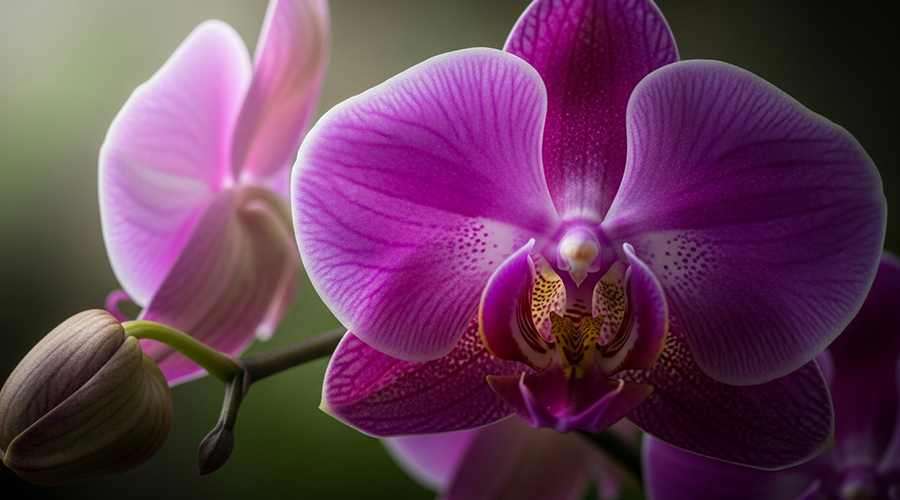Introduction: Entering the Wonderful World of Orchids
What is an Orchid?
Orchids, members of the large and magnificent Orchidaceae family, constitute one of the most diverse and widespread families of flowering plants on Earth. With about 28,000 known species, this family is present in almost every habitat, from tropical rainforests to near-polar regions. The distinctive feature of orchids is their unique flower structure, which usually consists of three petals and three sepals. One of the petals, called the "labellum" or lip, is modified and often acts as a landing platform for pollinators. This incredible diversity in shape, color, and size has made orchids one of the most fascinating subjects in the world of botany.
Why Are Orchids So Popular?
The global popularity of orchids stems from a combination of their enchanting beauty, endless variety, and the enjoyable challenge of caring for them. Their blooms, which appear in a wide range of colors and patterns, can last for months on the stem, adding a luxurious and durable touch to any space. For many, growing orchids is more than a simple hobby; it is a journey of discovery where they learn to respond to the delicate needs of a living being and are rewarded with stunning blossoms in return.
Roadmap of This Article
This comprehensive guide is designed to be useful and practical for both beginners who have just purchased their first orchid and experienced collectors seeking specialized information about rare species. We will begin our journey with a detailed introduction to the most popular houseplant species, then move on to the fundamental and universal principles of orchid care to avoid the most common mistakes. Next, we will introduce special and rare species, and finally, we will provide a complete guide to troubleshooting and combating pests and diseases. Join us to uncover the secrets of successfully growing these amazing plants.
Types of Orchids: From the Most Popular Options for Beginners to Professional Collections
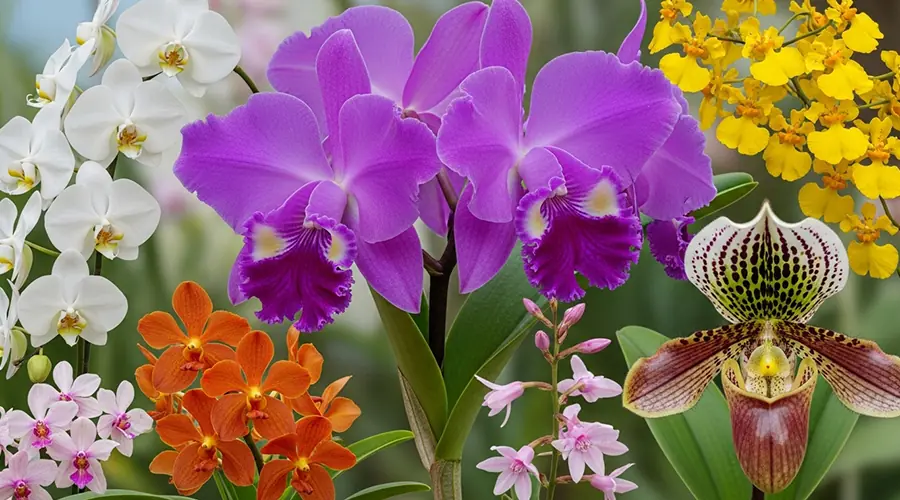
Popular Houseplant Orchids: The Best Options for Beginners
Starting your adventure with orchids shouldn't be daunting. Choosing resilient species that are adaptable to typical home conditions will significantly increase your chances of success and help you move on to more challenging species with greater confidence.
1. Phalaenopsis - The Moth Orchid
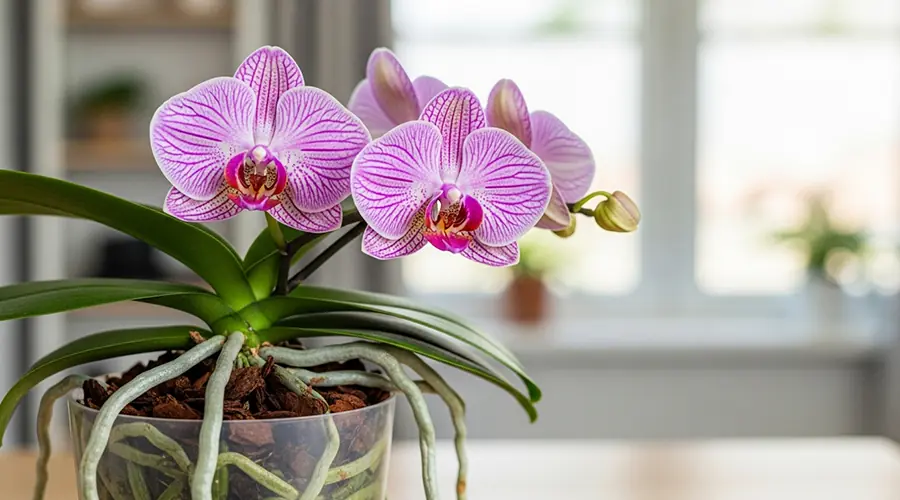
Undoubtedly, Phalaenopsis is the king of houseplant orchids and the best starting point for any enthusiast. This orchid, named the "Moth Orchid" due to the resemblance of its flowers to moths, is world-renowned for its ease of care, long-lasting blooms (often several months), and adaptability to low light.
- Light: Needs low to medium, indirect light. An east-facing window is ideal for it.
- Watering: Allow the potting medium to almost dry out between waterings.
- Reblooming: Stimulated by a drop in nighttime temperature (15-18°C) for a few weeks.
2. Paphiopedilum - The Venus Slipper Orchid
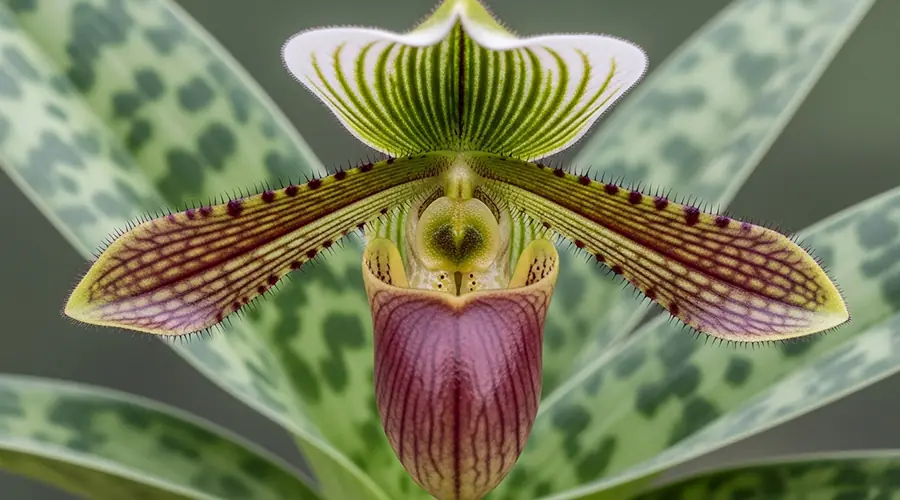
This orchid is instantly recognizable by its unique, pouch-shaped flowers. Due to their low light requirements, Paphiopedilums are an excellent choice for apartments and spaces that lack sufficient light for other orchids.
- Light: Prefers low light; a north or east-facing window is suitable.
- Watering: This orchid does not have pseudobulbs, so its potting medium should always be kept slightly moist (but not wet).
- Varieties: There are species with plain leaves (cool-growing) and species with patterned leaves (warm-growing).
3. Dendrobium - The Bamboo Orchid
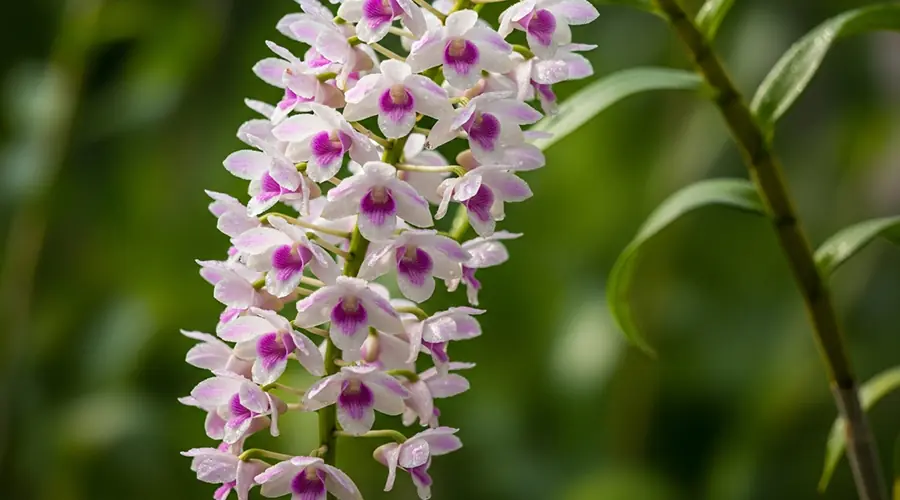
Dendrobium is a very large and diverse genus with over 1,800 species. Many of them produce smaller but more numerous flowers than Phalaenopsis and are suitable for beginners.
- Light: They need bright, indirect light.
- Watering: They require regular watering during the growing season but should be allowed to dry out between waterings.
- Potting: They like their roots to be tightly packed in the pot (Pot-Bound).
4. Oncidium - The Dancing Lady
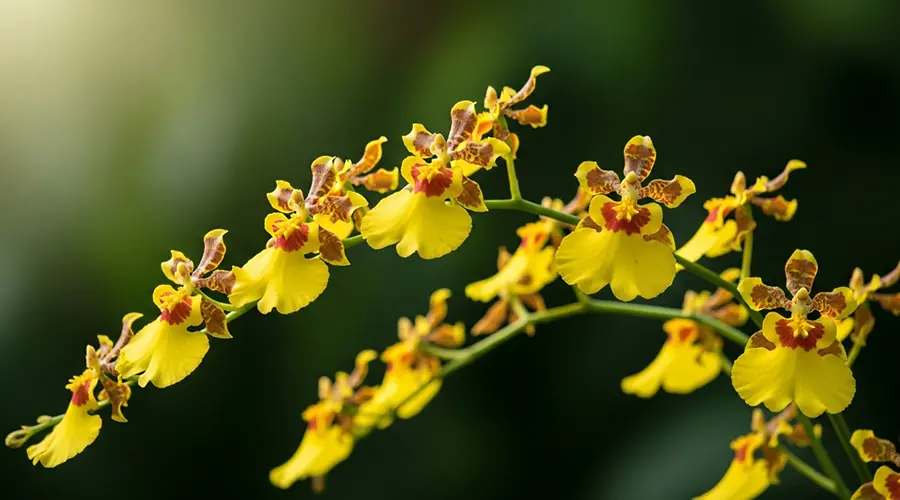
These orchids are known by this name because of the specific shape of their labellum, which resembles a dancing lady's skirt. They typically produce a cascade of small, delicate flowers, often in shades of yellow and brown.
- Light: They need bright, indirect light.
- Fragrance: Some popular hybrids like 'Sharry Baby' have a strong, pleasant fragrance similar to chocolate and vanilla.
- Sign of Underwatering: The appearance of accordion-like pleats on the pseudobulbs.
5. Epidendrum - The Crucifix Orchid
This species is popular for its small, colorful flowers that grow in clusters at the end of long stems.
- Resilience: A very hardy and easy-to-care-for plant.
- Light: It requires high light and can even tolerate some direct sunlight.
- Flowering: It often blooms several times a year.
6. Cambria - The Hybrid Orchid
Cambria is actually a trade name for complex hybrids created by crossing several different genera (such as Oncidium, Miltonia, and Odontoglossum).
- Features: Colorful flowers with spotted and striped patterns that are relatively easy to care for.
- Light and Temperature: Requires medium light and average room temperatures.
Quick Comparison Table: Needs of the Top Six Orchids for Beginners
| Orchid Species | Light Requirement | Watering Frequency (Guide) | Ideal Temperature (Day/Night) in °C | Difficulty Level |
|---|---|---|---|---|
| 1. Phalaenopsis | Low to medium indirect light | Every 7-10 days, after medium dries | 18-29 / 15-18 | Very Easy |
| 2. Paphiopedilum | Low light (North or East window) | Every 5-7 days, medium always slightly moist | 18-29 / 15-18 | Easy |
| 3. Dendrobium | High indirect light | Every 7-10 days, after medium dries completely | 18-29 / 15-18 | Easy to Medium |
| 4. Oncidium | High indirect light | Every 5-7 days, keep medium slightly moist | 18-29 / 15-18 | Easy to Medium |
| 5. Epidendrum | High light (can tolerate direct sun) | Regularly, let it dry out | 18-29 / 15-18 | Easy |
| 6. Cambria | Medium to high indirect light | Regularly, keep medium slightly moist | 18-29 / 15-18 | Easy |
Entering the Professional Level: Orchids for Experienced Enthusiasts
After gaining experience with easier species, you may want to expand your collection with orchids that offer more splendor and beauty but require more specialized attention and knowledge. These species often have more specific needs regarding light, temperature, and rest periods.
7. Cattleya - The Queen of Orchids
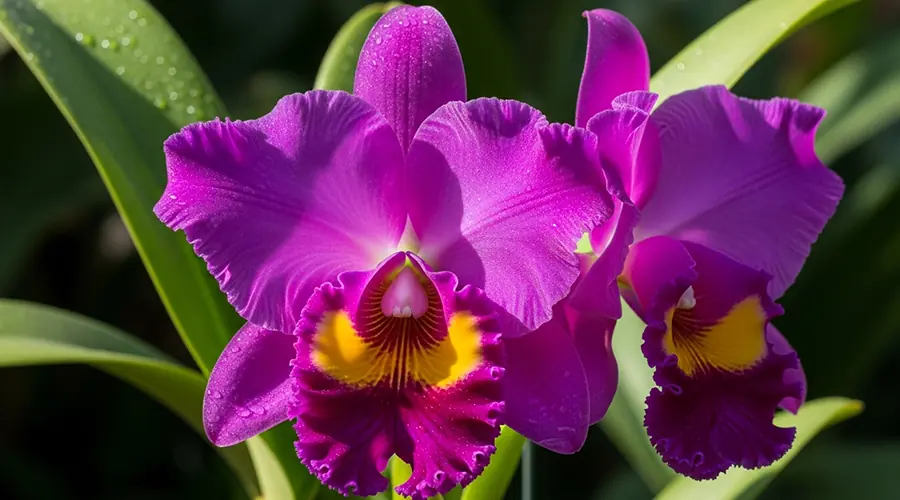
Cattleya, also known as the "Corsage Orchid," has earned the title "Queen of Orchids" for its very large, magnificent, and often intensely fragrant flowers.
- Light: Requires very high light (more than Phalaenopsis). An unobstructed south-facing window is ideal.
- Watering: They must dry out completely between waterings.
- Fertilizing: During the active growing season, they need regular feeding with a high-nitrogen fertilizer.
8. Cymbidium - The Boat Orchid
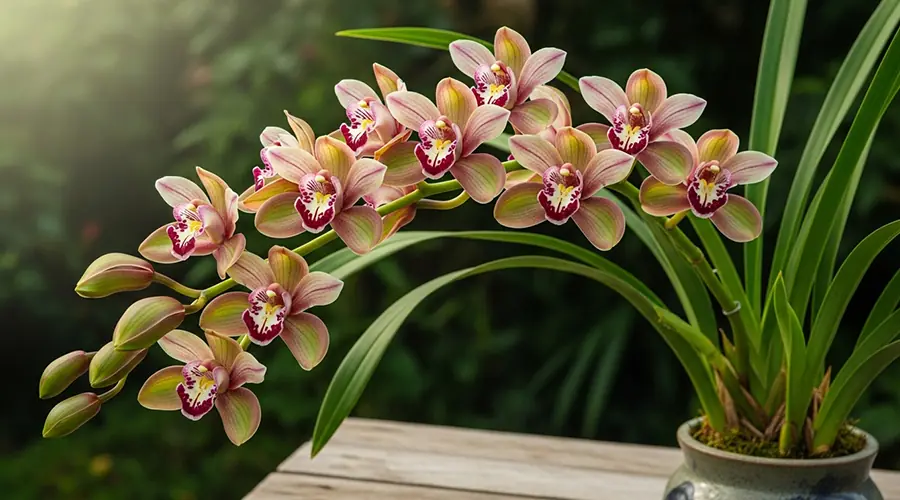
Cymbidiums are known for their long, arching spikes of waxy, long-lasting flowers.
- Temperature: The most crucial factor for blooming is exposure to nighttime temperatures between 10-15°C in the fall.
- Care: Ideal for keeping outdoors during the summer and fall.
9. Vanda
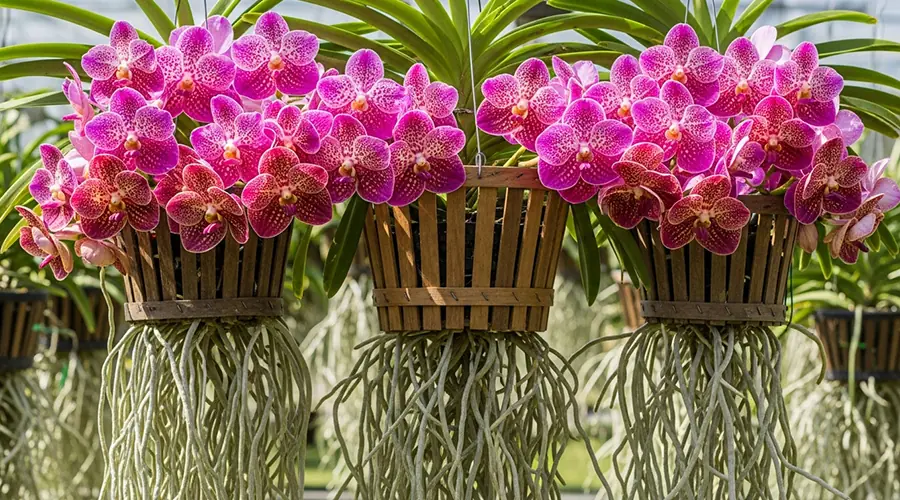
With its large, colorful flowers and thick, hanging aerial roots, Vanda is one of the most spectacular orchids and has very high requirements.
- Light, Temperature, and Humidity: Needs very high light, warm temperatures, and very high humidity (preferably 80%).
- Growing Method: Often grown bare-root in hanging wooden baskets and may require daily watering.
10. Miltonia/Miltoniopsis - The Pansy Orchid
These orchids, called "Pansy Orchids" due to the resemblance of their flowers to pansies, are popular for their beautiful and often fragrant blooms.
- Temperature and Watering: They prefer cooler temperatures and consistent moisture. Their medium should never be allowed to dry out completely.
- Sensitivity: Very sensitive to heat.
11. Zygopetalum
Zygopetalums are known for their fragrant, waxy flowers, often with spotted patterns in shades of purple, green, and brown.
- Temperature: They tolerate warm summers and cool winters and need this temperature fluctuation for optimal growth.
- Feature: An excellent choice for those looking for fragrant orchids that are resistant to cooler weather.
12. Brassia - The Spider Orchid
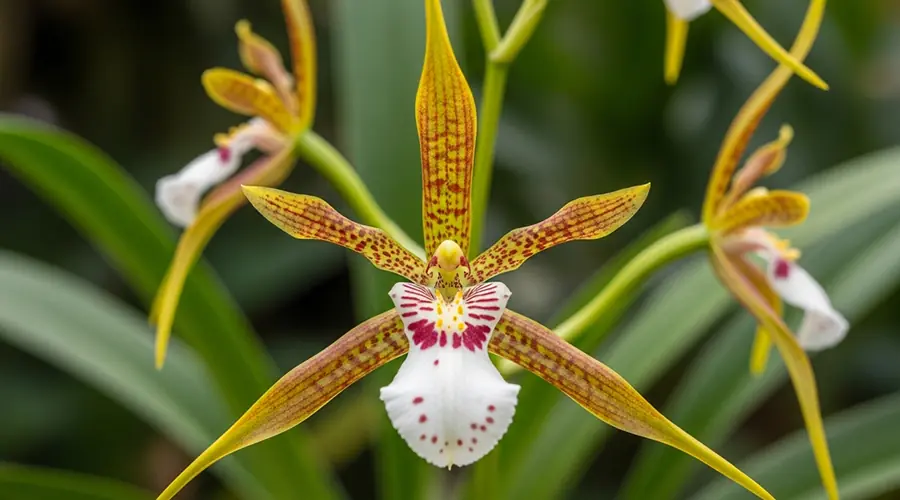
This orchid is one of the more unusual ones, with its long, narrow sepals that resemble a spider.
- Features: Has unusual and often very fragrant flowers.
- Needs: Requires high humidity and bright but diffuse light.
13. Maxillaria - The Coconut Orchid
This genus includes many species, but Maxillaria tenuifolia is particularly popular.
- Feature: Its small flowers produce a strong scent of roasted coconut.
- Care: Easy to care for but requires adequate ambient humidity.
Collector's Treasure Trove: Getting Acquainted with Special and Rare Species
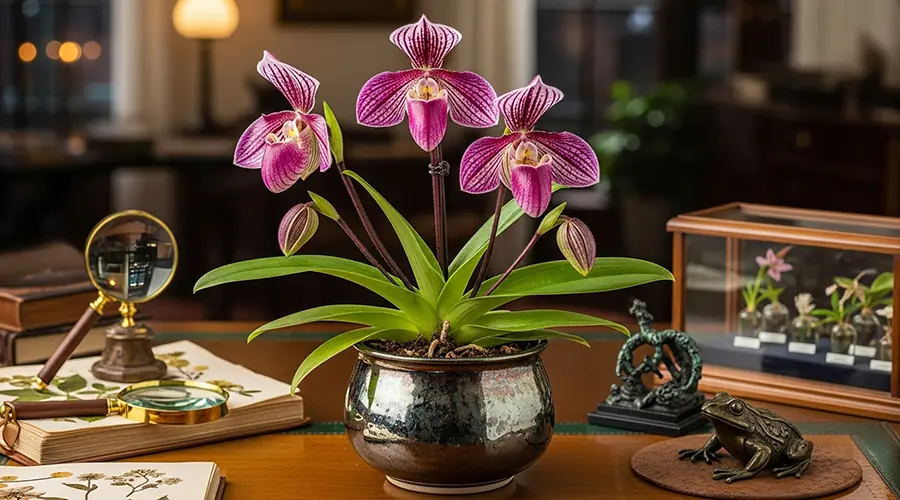
For professional enthusiasts, the world of orchids offers a treasure trove of strange, rare, and highly specialized species. Successfully cultivating these plants requires a deep understanding of their natural habitat and an effort to recreate those conditions.
14. Odontoglossum
- Features: Beautiful flowers with spotted and striped patterns.
- Needs: Requires very cool temperatures (cool-growing) and constant air circulation to grow and bloom. It is difficult to maintain in warm home environments.
15. Lycaste
- Features: A large flower with a delightful fragrance and long life.
- Needs: Has a winter dormancy period with complete leaf drop and requires a rest period with careful water management.
16. Phaius - The Nun's Orchid or Swamp Orchid
- Feature: It is a terrestrial (soil-dwelling) orchid.
- Needs: Grows in a humus-rich medium and, unlike most orchids, its soil must always be kept moist.
17. Masdevallia
- Features: Uniquely shaped flowers (usually resembling a triangle or cone).
- Sensitivity: Extremely sensitive to heat; requires low temperatures (especially at night) and very high humidity. Suitable for advanced growers.
18. Aerangis
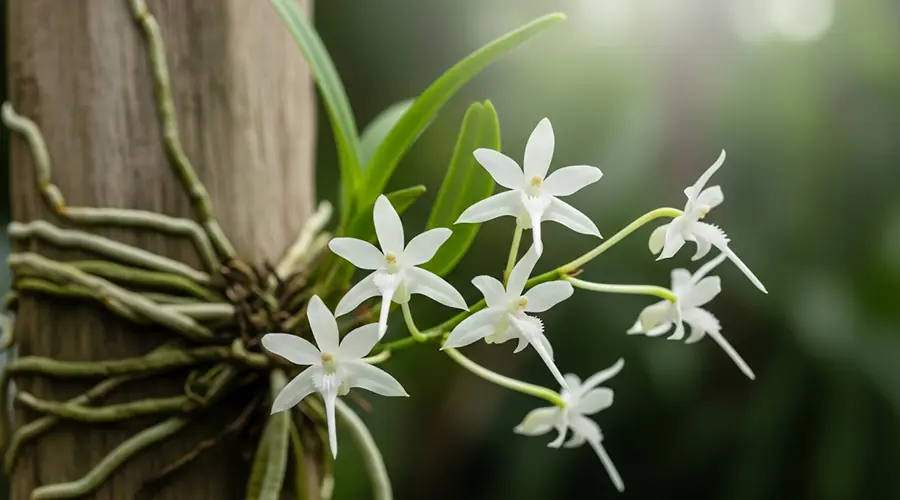
- Features: Delicate, star-shaped white/cream flowers that release a sweet scent at night.
- Care: Best grown mounted on wood or in baskets with excellent ventilation.
19. Catasetum
- Feature: Fascinating for producing separate male and female flowers (depending on light).
- Needs: Has a distinct winter dormancy cycle during which watering must be completely stopped, and the plant loses its leaves.
20. Brassavola - The Lady of the Night
- Feature: Famous for its powerful vanilla/citrus fragrance that is only released at night.
- Resilience: A very hardy plant that must dry out completely between waterings.
21. Ludisia - The Jewel Orchid
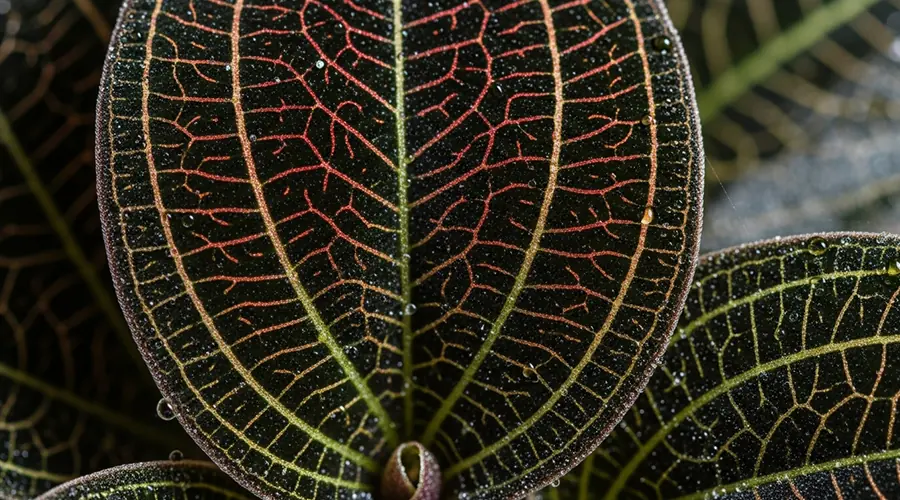
- Feature: Unlike most orchids, its main value lies in its dark, velvety leaves with red/golden veins.
- Light: It is a terrestrial orchid and grows well in low light conditions.
22. Rhynchostylis - The Foxtail Orchid
- Feature: Has dense, pendulous, and very fragrant flower clusters.
- Sensitivity: Very sensitive to being moved or repotted and requires high light.
23. Trichocentrum - The Mule-Ear Orchid
- Feature: Has fleshy, stiff, and cylindrical leaves that have evolved to store water and tolerate drought.
- Needs: Requires high light and epiphytic conditions (hanging or in a coarse bark medium).
24. Psychopsis - The Butterfly Orchid
- Feature: A flower resembling a large butterfly that blooms sequentially on a single spike, resulting in a long flowering period.
- Care: Relatively easy to care for and requires medium light.
Fundamental Principles of Orchid Care: A Quick Start Guide
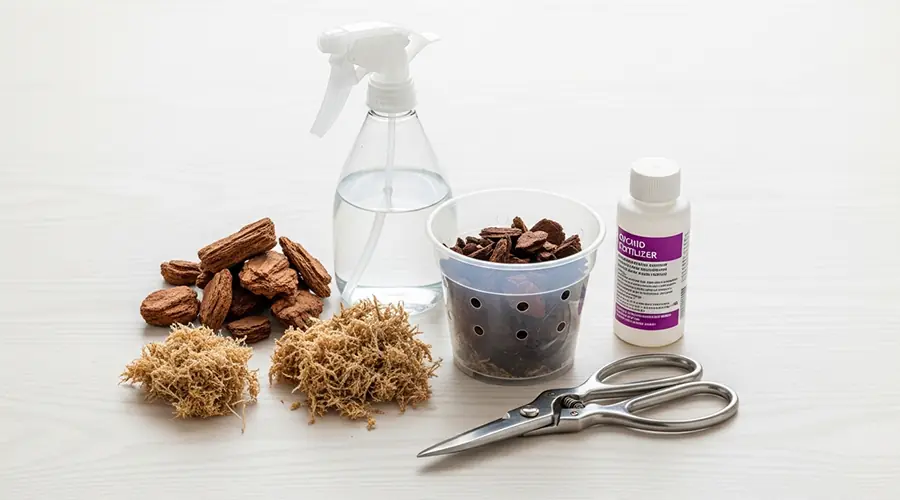
Success in orchid care depends on understanding and providing six key factors: light, watering, temperature, humidity, potting mix, and fertilizing.
Light: The Most Important Factor
Light provides the necessary energy for photosynthesis and ultimately, for flowering. Most houseplant orchids need bright but indirect, filtered light.
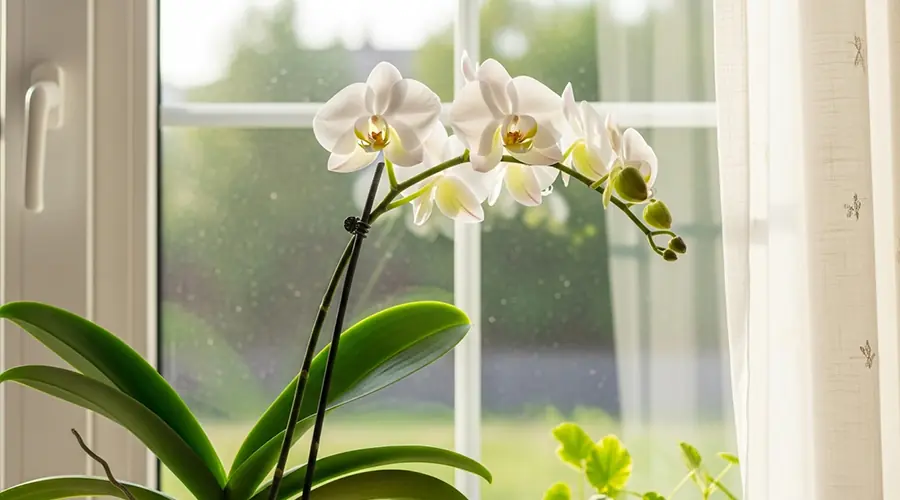
- Light Assessment: The "hand shadow test" (a shadow with well-defined borders but not too dark indicates sufficient light).
- Leaf Color: Bright, vibrant green indicates ideal light. Dark green means a lack of light.
- Proper Location: East-facing windows are ideal for many orchids like Phalaenopsis.
Watering: The Art of Correct Watering
Overwatering is the number one cause of death for orchids in a home environment. This common mistake leads to root rot.
- When to water? When the potting medium is almost dry. Silvery or white roots are thirsty; green, fleshy roots have enough water.
- How to water? The best method is "soaking" or "thorough flushing."
- Water Quality: If possible, use rainwater or cooled boiled water to prevent salt buildup.
Temperature and Humidity: Simulating a Tropical Environment at Home
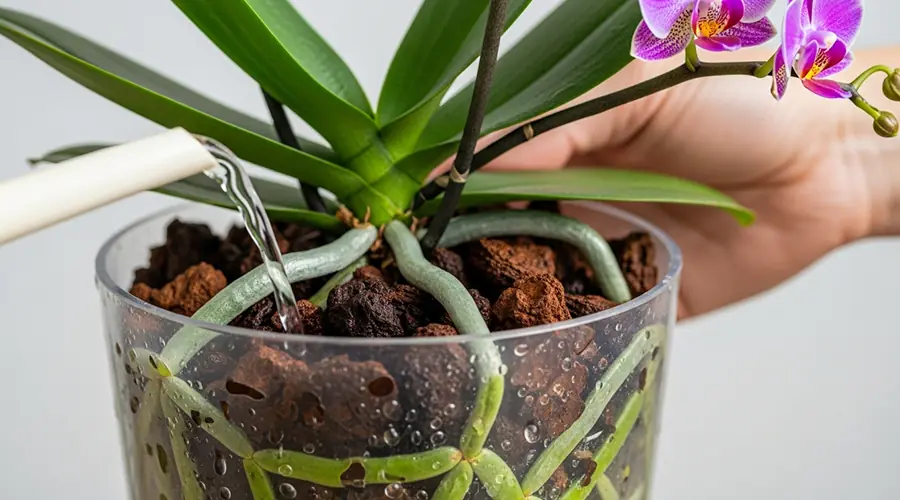
- Temperature: Most houseplant orchids prefer average room temperatures (18-29°C during the day).
- Key Tip: A temperature difference of 5-10°C between day and night is essential to stimulate flowering in many species.
- Humidity: Orchids perform best in relative humidity between 50% and 70%. Use methods like a pebble tray or a cool-mist humidifier.
Potting Mix: Why Orchids Don't Grow in Regular Soil
Most popular houseplant orchids are "epiphytes," and their roots need air to breathe.
- Potting Mix Components: Pine bark (Orchid Bark), sphagnum moss, perlite, and charcoal.
- Suitable Pot: Transparent plastic pots allow you to easily check the health of the roots and the moisture level of the mix.
Fertilizing: Feeding for Growth and Blooms
Follow the "weakly, weekly" rule: during the active growing season (spring and summer), dilute orchid-specific fertilizer to one-quarter or half the recommended strength and apply weekly or bi-weekly.
- Flushing the Medium: Once a month, water the pot thoroughly with plain, unfertilized water to flush out excess salts from the medium.
Troubleshooting and Plant Health: A Guide to Combating Common Pests and Diseases
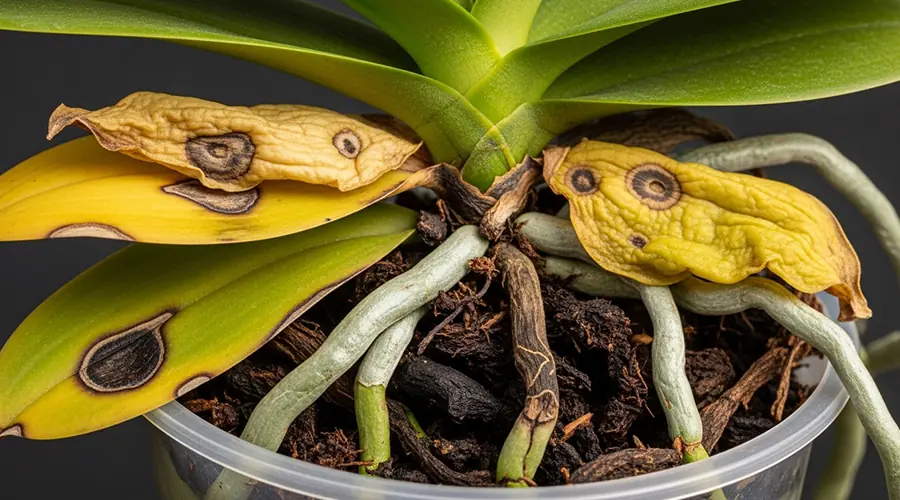
Common Problems (Cultural Issues)
- Yellowing Leaves: The most likely cause is overwatering.
- Failure to Bloom: Has two main causes: insufficient light and lack of a sufficient temperature difference between day and night.
- Bud Blast (Dropping Buds): Caused by sudden environmental stress such as an abrupt temperature change, moving the pot, or exposure to ethylene gas (produced by ripening fruit).
- Root Rot: Roots become brown, soft, and mushy. Treatment involves removing the plant, cutting away rotten roots with a sterile tool, disinfecting, and repotting in a completely new, dry medium.
Common Pests
| Pest | Symptoms | Treatment |
|---|---|---|
| Mealybugs | Small white, cottony masses in the crevices of leaves and stems | Cotton swab dipped in 70% isopropyl alcohol or neem oil |
| Scale | Small, round, brown bumps attached to leaves and stems | Manual removal with alcohol or systemic insecticides |
| Spider Mites | Very fine webs under leaves, silvery or yellow spots on the leaf surface | Increase humidity, wash with a jet of water, use specific miticides |
| Aphids & Thrips | Attack new buds and flowers, causing deformities | Wash with a jet of water, use insecticidal soap |
Common Diseases
- Fungal and Bacterial Spots: Black or brown spots on the leaves, often caused by stagnant water on the leaves and poor ventilation.
- Prevention and Treatment: Avoid wetting the leaves when watering, increase air circulation. Remove infected leaves and use a suitable fungicide or bactericide if necessary.
The Language of Flowers: Symbolic Meanings of Different Orchid Colors
Orchids carry deep symbolic meanings, making them an ideal gift.
- White Orchid: Symbol of purity, innocence, and elegance.
- Purple Orchid: Represents royalty, nobility, respect, and admiration.
- Pink Orchid: Symbol of grace, joy, and gentle love.
- Yellow Orchid: Expresses friendship, success, joy, and new beginnings.
- Red Orchid: Symbol of passion, desire, and fiery love (rare).
- Blue Orchid: Represents strength, peace, nobility, and rarity (often artificially colored).
Conclusion: Orchids, a Lifelong Hobby
Success in growing orchids depends not on having a "green thumb," but on knowledge, careful observation, and responding to the specific needs of each species. The key is to understand that there is no one-size-fits-all approach for all orchids. Remember that your orchid's biggest enemy is too much love in the form of overwatering. Learn to pay attention to your plant's signs. Growing orchids is a dynamic and lifelong hobby.



